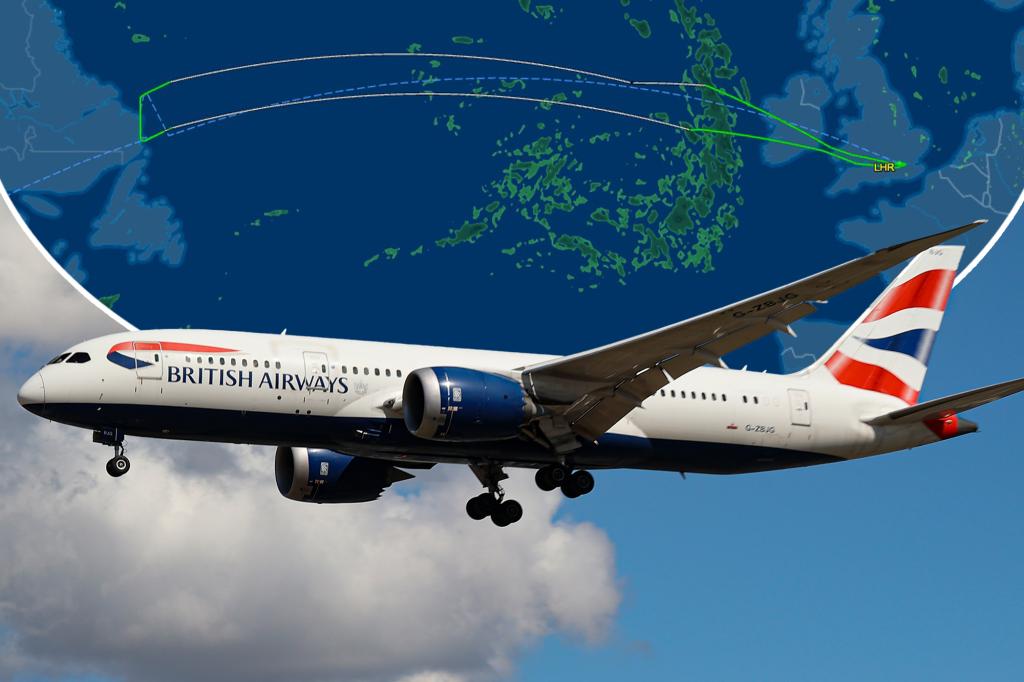Passengers on British Airways Flight 195 experienced a frustrating mishap when their transoceanic flight from London to Houston was forced to turn around and return to London halfway through the journey due to a minor technical issue. The Boeing 787-9 Dreamliner with nearly 300 passengers on board had been in the air for around five hours and was nearing the coast of Newfoundland when the decision was made to divert back to London. By the end of the nine-hour journey, the plane had flown over 4,800 miles and traversed the Atlantic Ocean twice without reaching its intended destination.
While the exact nature of the technical issue was not disclosed, reports indicate that there was a problem with one of the engines that could potentially impact future flights. Despite the unexpected turn of events, the aircraft landed safely and passengers were able to disembark as normal. British Airways offered apologies to all affected travelers and arranged for rebooking on the next available flights, accommodations, and information on how to claim additional expenses. The decision to fly back to London for repairs raised questions about why the plane did not divert to a closer airport for maintenance.
Experts speculate that the reason for returning to London for repairs could be related to British Airways’ contract with engine manufacturer Rolls Royce. It is suggested that Rolls Royce may have played a role in the decision due to their involvement in the engine’s situation. While the explanation for the choice of Heathrow Airport as the repair location remains unclear, the incident underscores the complexities of international flight operations and the various factors that come into play during such unforeseen circumstances. The information provided to passengers and the airline’s efforts to accommodate their needs demonstrate a commitment to customer service and safety despite the inconvenience of the situation.
The nine-hour flight to nowhere highlights the challenges that can arise in air travel, where even minor technical issues can have extensive consequences for passengers and airlines. The unexpected diversion and return trip underscore the importance of safety protocols and quick decision-making in ensuring the well-being of all individuals on board. The incident also sheds light on the intricate relationships between airlines, manufacturers, and maintenance facilities, as well as the behind-the-scenes factors that influence operational decisions. While disruptive incidents like this can be frustrating for passengers, they also showcase the dedication of airlines to prioritizing safety and customer care in challenging circumstances.
As passengers affected by the situation navigate rebooking and continuation of their journeys, the incident serves as a reminder of the unpredictable nature of travel and the resilience required to address unexpected challenges. Airlines like British Airways play a crucial role in managing such incidents with professionalism and efficiency, responding to technical issues while minimizing disruptions to passenger schedules. Ultimately, the nine-hour flight to nowhere serves as a cautionary tale of the complexities of air travel and the importance of safety protocols and cooperation between airlines, manufacturers, and maintenance facilities to ensure the smooth operation of flights and the well-being of passengers.


